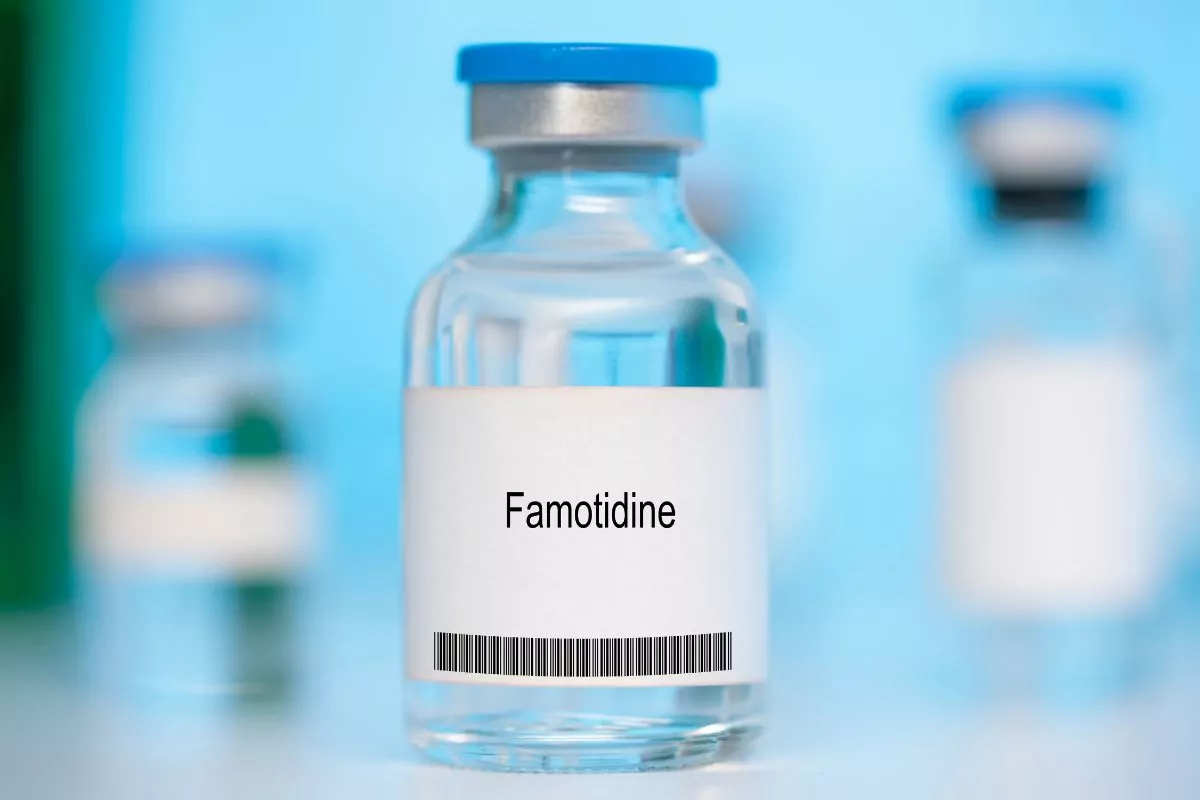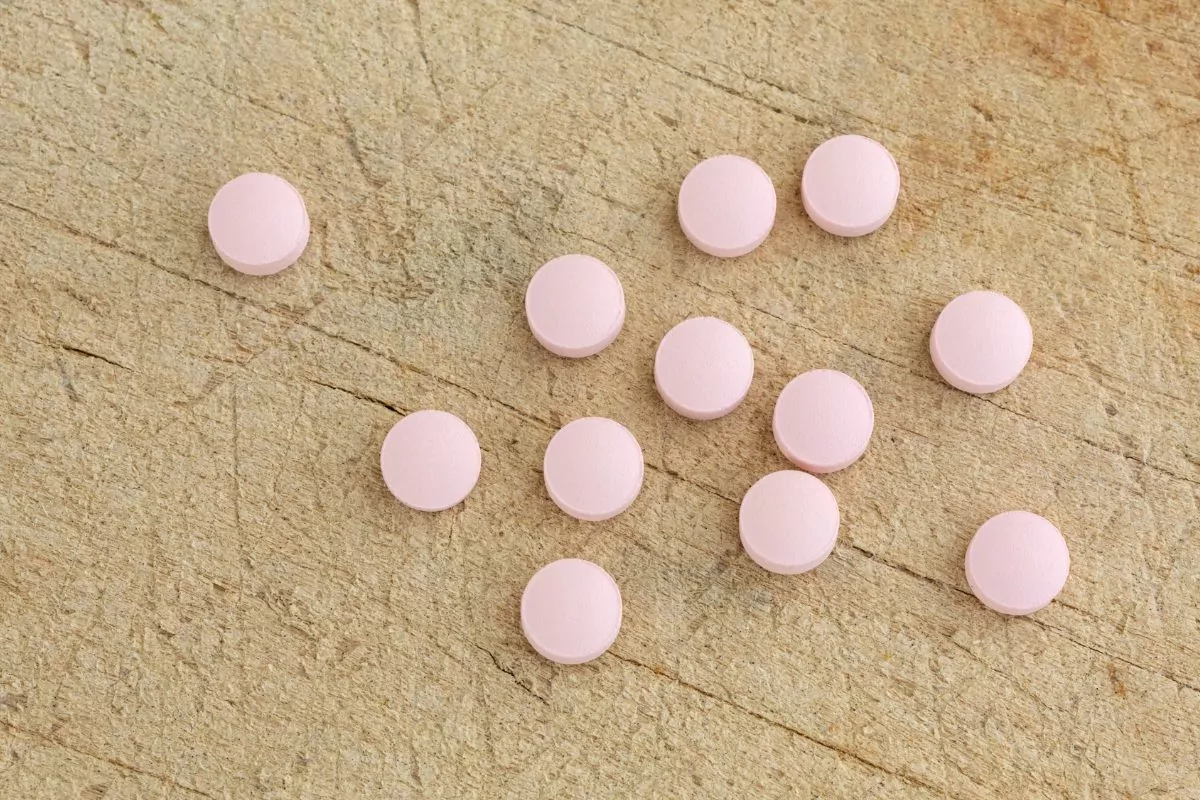What is Famotidine for Dogs?
Famotidine for dogs, a canine variant of a popular human medication, is a crucial remedy in veterinary medicine. This drug, known for its efficacy in reducing stomach acid production, is commonly prescribed to treat various gastrointestinal conditions in dogs.
It exemplifies a key crossover from human to veterinary medicine, offering dogs relief from gastric discomforts and illnesses.

What is Famotidine Used for in Dogs?
In veterinary circles, veterinary professionals revere famotidine for its versatile applications. Primarily, it manages conditions such as gastritis, esophagitis, and gastric or duodenal ulcers in dogs.
Famotidine’s role extends to preventing ulcer formation caused by kidney disease or using non-steroidal anti-inflammatory drugs (NSAIDs). Its effectiveness in treating these conditions underscores its importance.
By reducing stomach acid, famotidine alleviates the discomfort and potential harm caused by excessive acid production, safeguarding dogs’ digestive health.
What Does Famotidine Do for Dogs?
Famotidine operates by inhibiting the action of histamine on stomach cells, specifically targeting histamine-2 (H2) receptors. This inhibition significantly reduces gastric acid secretion, leading to a decrease in stomach acidity.
For dogs experiencing gastric distress, famotidine provides relief by creating a less acidic environment, which aids in healing inflamed or ulcerated areas of the stomach and intestines.
This action alleviates symptoms and promotes recovery in dogs suffering from acid-related gastrointestinal disorders.
Famotidine’s Efficacy
The efficacy of famotidine in dogs is well-documented. It effectively reduces gastric acid production, quickly relieving symptoms associated with excess stomach acid. Numerous studies have shown its effectiveness in treating and managing various gastrointestinal issues in dogs (Tolbert et al., 2016).
Its ability to improve clinical outcomes in canine patients has made it a preferred choice among veterinarians for treating acid-related digestive disorders.
Famotidine’s Possible Drug Interactions
While famotidine for dogs is generally safe, it can interact with certain medications. It may affect the absorption of drugs that require an acidic environment for proper absorption.
Examples include antifungal medications, heart medications like atenolol, and some antibiotics.
Concurrent use of famotidine with these drugs may necessitate dosage adjustments. Combining it with other acid reducers or certain antacids could also alter effectiveness.
Therefore, informing your veterinarian about any medications your dog is taking is crucial to avoid potential interactions.
What is the Right Famotidine Dose for Dogs?
Determining the correct famotidine dose for dogs depends on the dog’s weight and the treatment condition. Typically, the dosage ranges from 0.5 to 1.0 mg/kg (0.25 to 0.5 mg/lbs) every 12 to 24 hours.
For example, a 20mg tablet of famotidine for dogs may be appropriate for larger breeds, while 5 mg famotidine for dogs might be suitable for smaller breeds. However, following a veterinarian’s prescription is essential, as they will provide a tailored famotidine dosage chart based on your dog’s needs.
Famotidine for Dogs: Side Effects
While famotidine for dogs is generally well-tolerated, side effects can occur. These may include decreased appetite, drowsiness, and, in rare cases, vomiting or diarrhea. Monitoring your dog for adverse reactions is essential, especially when first starting the medication.
If you notice any significant changes in your dog’s behavior or health, consult your veterinarian immediately. The side effects of famotidine for dogs are usually mild and resolve independently, but professional advice is crucial in ensuring your dog’s safety and well-being.
Is Famotidine Safe for Dogs?
Famotidine is considered safe for most dogs when used as directed. However, it’s unsuitable for dogs with certain health conditions, such as liver or kidney disease, without a veterinarian’s guidance.
Pregnant or nursing dogs should also use famotidine with caution.
Do I Need a Prescription for Famotidine for Dogs?
Famotidine is available over-the-counter and does not typically require a prescription. However, you should strongly consider consulting a veterinarian before administering famotidine to your dog.
A veterinarian can provide the proper dosage and ensure the medication suits your dog’s specific condition. They can also guide you on how much famotidine you can give your dog, ensuring safe and effective treatment.

Can Dogs Overdose on Famotidine?
Overdosing on famotidine is rare but possible. Symptoms of overdose may include rapid heartbeat, restlessness, or muscle spasms. If you suspect your dog has ingested too much famotidine, seek veterinary attention immediately.
To prevent an overdose, always adhere to the prescribed famotidine dose for dogs and store the medication out of reach of pets.
What are the Brand Names for Famotidine?
Famotidine is on the market under several brands, including Pepcid, Pepcid AC, and Famotac. These brands offer various formulations, such as famotidine tablets and liquid famotidine for dogs, catering to different preferences and needs.
How is Famotidine Supplied?
Famotidine is available in various forms, including tablets and oral suspension (liquid famotidine for dogs). The tablets typically come in strengths like famotidine 20mg and famotidine 10mg.
The liquid formulation is an alternative for dogs that have difficulty swallowing pills. The choice of form depends on the dog’s size, the ease of administration, and the veterinarian’s recommendation.
What Should I Do if I Missed a Dose?
If you miss a dose of famotidine for your dog, administer it as soon as you remember. However, if it’s almost time for the next dose, 30-60 minutes, skip the missed dose and continue with the regular schedule.
Do not double up on doses, as this could increase the risk of side effects. Always follow your veterinarian’s dosing guidelines to ensure your dog receives the correct amount of medication.
Are There Alternatives to Famotidine?
There are alternatives to famotidine for managing stomach acid-related issues in dogs. These include other acid reducers like omeprazole or ranitidine. Dietary changes and natural remedies may also be effective in some instances.
However, discussing these alternatives with a veterinarian before changing your dog’s treatment is important. Each dog’s condition is unique, and what works for one may not be appropriate for another. A veterinarian can guide you on the best course of action for your dog’s needs.
How is Famotidine Administered?
You can administer Famotidine orally in tablet form or as a liquid suspension. You can give the tablets directly or hide them in a small amount of food. Liquid Famotidine is often easier to administer, especially for smaller dogs or those who resist taking pills.
Always follow the veterinarian’s instructions regarding the method and timing of administration to ensure the maximum effectiveness of the medication.
What is the Best Way to Store Famotidine for Dogs?
Famotidine for dogs should be stored at room temperature, away from light and moisture. Keeping the medication in its original packaging is crucial to protect it from environmental factors.
Keep famotidine out of reach of children and pets to prevent accidental ingestion. Proper storage ensures the medication remains effective and safe for use when needed.
Can You Use Famotidine for Cats?
Famotidine is also used in cats, primarily for reasons similar to those in dogs – to reduce stomach acid and treat conditions like ulcers and gastritis. However, the dosage and administration for cats differ from that of dogs.
It’s crucial to consult a veterinarian for the correct dosage and ensure it’s safe for your cat, especially considering their unique physiological differences from dogs.

In Conclusion…
Famotidine offers a safe and effective way to manage gastrointestinal issues in dogs. While it’s generally well-tolerated, following a veterinarian’s guidance for dosage and monitoring is essential.
Famotidine exemplifies the crossover of human medicine into veterinary practice, providing significant relief for our canine companions.
References
Tolbert, M. K., Graham, A., Odunayo, A., Price, J., Steiner, J. M., Newkirk, K., & Hecht, S. (2016). Repeated famotidine administration results in a diminished effect on intragastric pH in dogs. Journal of Veterinary Internal Medicine, 31(1), 117–123. https://doi.org/10.1111/jvim.14615
